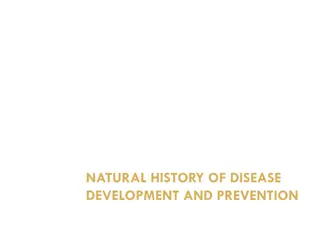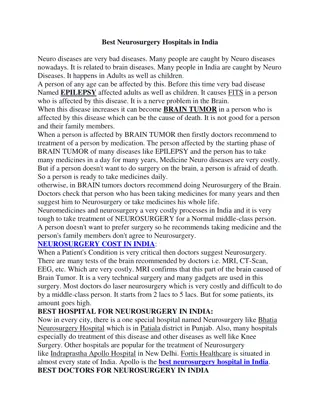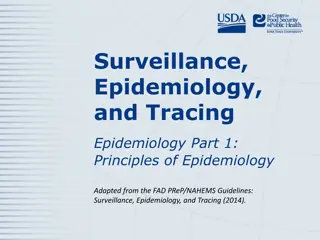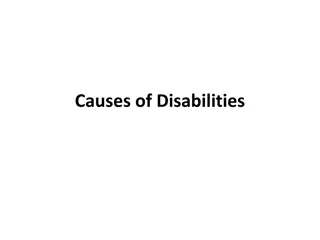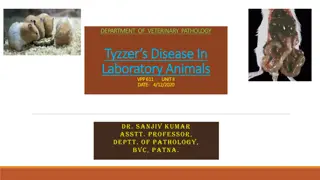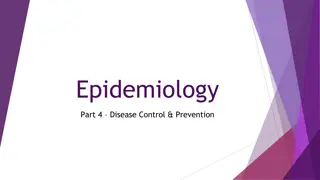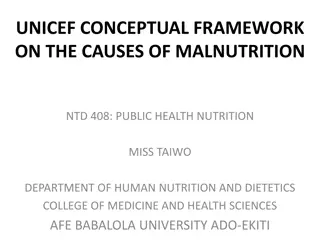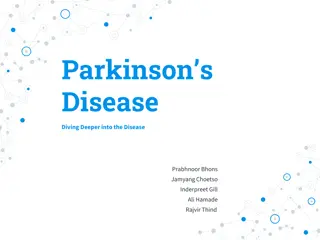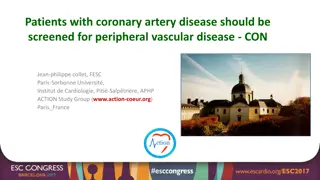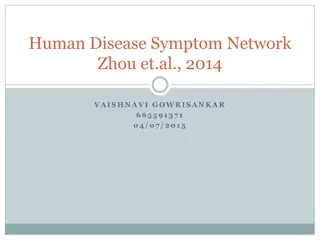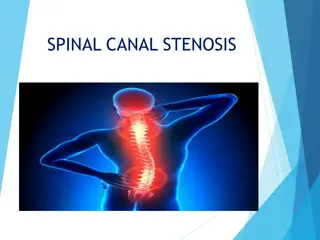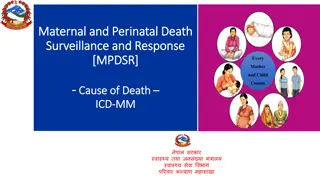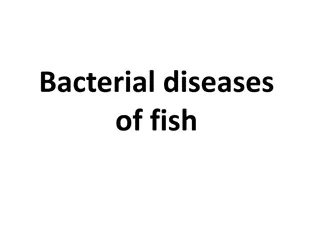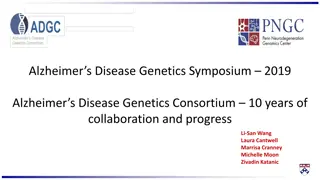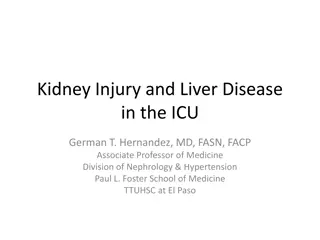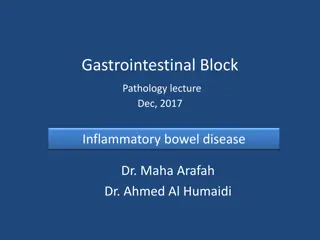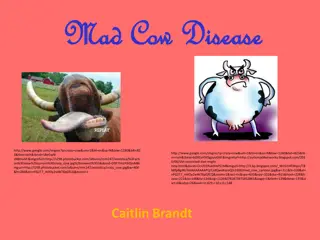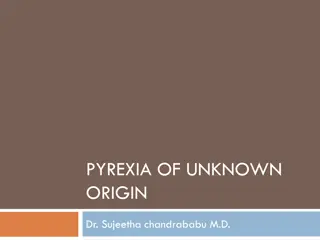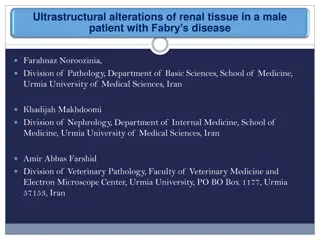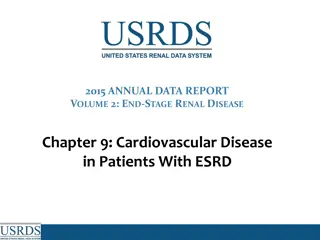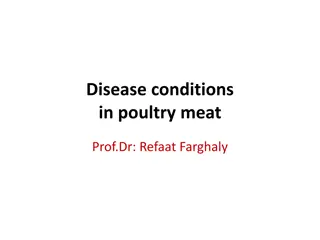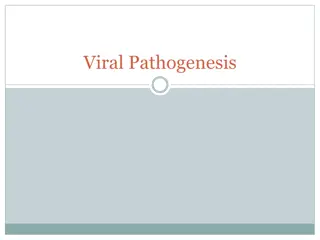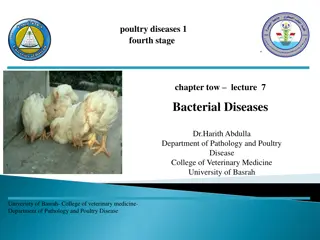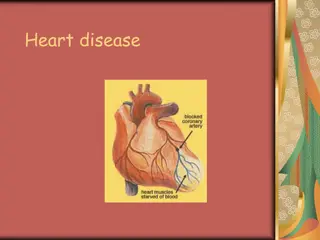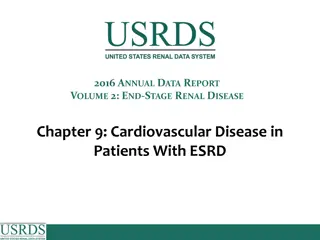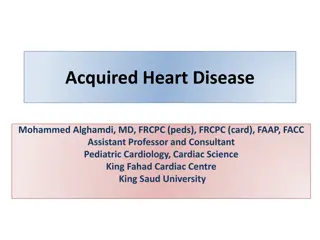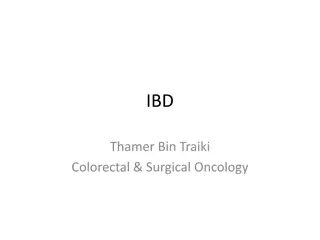The Natural History of Disease Development and Prevention
The natural history of disease development outlines the progression of a disease in an individual without intervention, from exposure to outcome. Learning objectives include defining prevention terms, understanding disease severity, prevention levels, and intervention measures. Studying disease prog
4 views • 16 slides
Best Neurosurgery Hospitals in India
Neuro diseases are very bad diseases. Many people are caught by Neuro diseases nowadays. It is related to brain diseases. Many people in India are caught by Neuro Diseases. It happens in Adults as well as children.\nA person of any age can be affected by this. Before this time very bad disease Named
1 views • 2 slides
Principles of Epidemiology: Understanding Disease Occurrence and Surveillance
Epidemiology is the study of disease patterns, factors influencing disease occurrence, and the core functions of surveillance, field investigation, and analytic studies. It involves understanding disease characteristics, natural history, and evaluating the effectiveness of activities to mitigate dis
1 views • 25 slides
Causes of Disabilities Across Different Stages of Life
Disabilities can arise at various stages of life, including prenatal, perinatal, infancy, early childhood, adolescence, adulthood, and old age. The causes of disabilities can be categorized into prenatal, perinatal, and postnatal factors. Prenatal causes include genetic deformities, maternal health
1 views • 24 slides
Stillbirth: Causes, Symptoms, and Investigations
Stillbirth, the delivery of a baby with no signs of life after 20 completed weeks of pregnancy, can have profound emotional and social effects. Unexplained causes account for 50% of cases, with fetal, placental, and maternal factors contributing. Risk factors include obesity, maternal age, smoking,
2 views • 26 slides
Insights into Tyzzer's Disease: An Overview of a Bacterial Infection in Laboratory Animals
Tyzzer's disease is an acute bacterial infection affecting rodents and rabbits, caused by Clostridium piliforme. Discovered in 1917 by Ernest Tyzzer, the disease is characterized by necrotic lesions in the caecal mucosa, liver, and heart. Initially known as Bacillus piliformis, it was later renamed
2 views • 21 slides
SYNCHYTRIUM: Causes, Symptoms, and Control of Potato Wart Disease
Synchytrium endobioticum causes potato wart disease, prevalent in cool, moist climates globally. The disease affects underground parts, causing dark brown outgrowths on tubers and shoots. Infected tubers become deformed, tasteless, and unfit for consumption. Classification, symptoms, somatic structu
1 views • 20 slides
Disease Control and Prevention in Epidemiology
This article discusses disease control processes in epidemiology, including reducing disease incidence, duration, and transmission. It covers public policy interventions, elimination, eradication, and extinction of infectious agents. It also highlights preventable causes of disease and different lev
2 views • 10 slides
UNICEF Conceptual Framework on the Causes of Malnutrition
The UNICEF conceptual framework on the causes of malnutrition outlines the multidimensional factors contributing to malnutrition, categorized into immediate, underlying, and basic causes. Immediate causes include inadequate dietary intake and diseases, while underlying causes involve issues like ina
2 views • 18 slides
Parkinson's Disease: Diving Deeper into the Neurodegenerative Disorder
Parkinson's disease is a neurodegenerative disorder that impacts dopamine levels in the brain. The history, epidemiology, causes, and pathophysiology of the disease are explored, shedding light on its significant impact on the nervous system. Genetic and environmental factors play a role in the deve
1 views • 25 slides
Screening for Peripheral Vascular Disease in Patients with Coronary Artery Disease
Patients with coronary artery disease should be screened for peripheral vascular disease as it is a frequent integrator of global cardiovascular risk. The association of atherosclerosis in various arterial diseases highlights the importance of identifying multisite artery disease. The prevalence and
0 views • 23 slides
Akabane Disease: Causes, Symptoms, and Prevention
Akabane disease, also known as Enzootic Bovine Arthrogryposis and Hydranencephaly, is a viral illness transmitted by arthropods that primarily affects calves, lambs, and kids. The disease can lead to congenital abnormalities such as joint immobility and absence of the cerebral hemisphere. It is caus
2 views • 19 slides
Human Disease Symptom Network: Understanding Disease Relationships Through Symptoms and Genes
The Human Disease Symptom Network (HSDN) is constructed using a large-scale medical bibliographic records database to form a network of human diseases based on symptom similarities. By integrating disease-gene associations and protein-protein interaction data, correlations between symptom similarity
1 views • 37 slides
Spinal Canal Stenosis: Causes, Symptoms, and Classification
Spinal canal stenosis is the abnormal narrowing of the spinal canal or intervertebral foramina, leading to compression of nerves and blood vessels. It can result in symptoms such as radiculopathy, claudication, myelopathy, and more. Cervical stenosis presents with arm pain and weakness, while lumbar
0 views • 18 slides
Causal Factors in Illness: Toxins, Smoking, and Contributing Causes
Causal standards for illness attribution, toxins' role in disease onset and expression, and the impact of factors like smoking and contributing causes on health outcomes are explored. The distinction between certain and contributing causes, as well as the level of certainty in carcinogen classificat
1 views • 19 slides
Maternal and Perinatal Death Surveillance and Response
Explore the causes and classification of maternal and perinatal deaths, emphasizing the importance of determining the primary, contributory, and final causes of death. Learn how to categorize maternal deaths according to ICD-MM and perinatal deaths according to ICD-PM classifications. Delve into the
0 views • 61 slides
Bacterial Diseases of Fish: Columnaris Disease Overview
Columnaris disease, also known as Saddleback disease, is a common bacterial infection in fish that is often brought about by poor handling and high stress levels. This disease manifests as tail and fin rot, leading to rapid fish mortality. The causative organism, Cytophaga (formerly Flexibacter), is
0 views • 21 slides
Decoding Genetics: Insights from Alzheimer's Disease Symposium to Type 2 Diabetes Study
Explore the latest findings from the Alzheimer's Disease Genetics Symposium 2019 on disease mechanisms, drug targets, and genetic pathways. Dive into the progress made by the Alzheimer's Disease Genetics Consortium over the past decade. Transition to a Genome-Wide Association Study uncovering suscep
0 views • 42 slides
Implementing Newborn Screening for Sickle Cell Disease
Establishing a program for newborn screening of sickle cell disease is crucial for early identification and intervention, reducing associated mortality and morbidity. Key principles and practices, including the importance of analytical validity and safe interventions, underscore the need for informe
0 views • 41 slides
Peyronie's Disease (Penile Curvature)
Peyronie\u2019s disease is also called as penile curvature disease that makes curved penis which causes anxiety, stress and pain during erection. For more info visit: \/\/ \/blog\/peyronies-disease-symptoms-causes-and-treatments\/
1 views • 10 slides
Causes and features of cyanotic congenital heart disease
This informative content covers the causes and features of cyanotic congenital heart disease, including central cyanosis due to congenital heart diseases like Tetralogy of Fallot, pulmonary atresia, Ebstein anomaly, and more. It also discusses non-cardiac causes of cyanosis related to lung diseases,
0 views • 41 slides
Liver Disease Burden in Tower Hamlets
Dr. Somen Banerjee, Director of Public Health in London Borough Tower Hamlets, highlights the concerning liver disease mortality rates in the area, with high incidence of cirrhosis, cancer, and hepatitis B and C. The data reveals a significant burden of liver diseases such as Non-Alcoholic Fatty Liv
0 views • 18 slides
Kidney Injury and Liver Disease in the ICU
This presentation delves into the intricacies of acute kidney injury (AKI) and its occurrence in patients with liver disease in the intensive care unit (ICU). It covers the definitions, classifications, and causes of AKI, emphasizing the Hepatorenal Syndrome, a form of functional renal failure in en
0 views • 29 slides
Inflammatory Bowel Disease: Crohn's Disease and Ulcerative Colitis
Inflammatory Bowel Disease (IBD) encompasses Crohn's disease (CD) and ulcerative colitis (UC), chronic conditions with immunologic basis. This article delves into the epidemiology, pathophysiology, and differences between CD and UC, highlighting clinical features, pathology, and complications like a
0 views • 42 slides
Heart Disease: Causes, Symptoms, and Common Conditions
Heart disease, a prevalent health issue in the United States, encompasses various cardiovascular conditions like coronary artery disease and hypertension. It is a leading cause of death, often resulting from conditions that can lead to heart attacks or failure. Symptoms of heart conditions vary, fro
0 views • 28 slides
Mad Cow Disease: Causes, Symptoms, and Prevention
Mad Cow Disease, or BSE, is an incurable and fatal brain disease caused by prions affecting cattle. It can be transmitted to humans through contaminated meat, leading to vCJD. While rare and non-contagious, it poses a serious health risk with no known treatment. The disease progresses slowly, affect
0 views • 6 slides
Pyrexia of Unknown Origin: Causes and Classification
Pyrexia of unknown origin (PUO) is a challenging diagnostic scenario characterized by persistent fever without an identified cause. Dr. Sujeetha Chandrababu M.D. defined PUO as temperatures exceeding 38.3°C for several weeks with no definitive diagnosis. Classification of PUO includes various categ
0 views • 43 slides
Ultrastructural Alterations of Renal Tissue in a Male Patient with Fabry's Disease
Fabry's disease is a rare X-linked lipid storage disorder characterized by deficient lysosomal alpha-galactosidase A activity. This condition primarily affects males, leading to chronic kidney disease and progression to end-stage renal disease. Kidney involvement is a critical aspect, and high doses
0 views • 24 slides
Cardiovascular Disease in End-Stage Renal Disease Patients: Data Analysis 2011-2013
Understanding the prevalence and causes of cardiovascular diseases in patients with End-Stage Renal Disease (ESRD) is crucial for effective management. This report analyzes data from 2011-2013, focusing on the causes of death in ESRD patients, prevalence of cardiovascular diseases by treatment modal
0 views • 18 slides
Disease Conditions in Poultry Meat: Causes, Symptoms, and Lesions
This detailed information by Prof. Dr. Refaat Farghaly discusses various disease conditions in poultry meat, including bacterial, viral, parasitic, and protozoal diseases. It covers diseases such as tuberculosis, fowl cholera, marek's disease, salmonellosis, and coccidiosis, providing insights into
0 views • 28 slides
Viral Pathogenesis: Causes and Consequences
Viral pathogenesis involves the process by which a virus leads to disease, exploring the interplay between viral and host factors. It encompasses the concepts of virulence, viral disease, and the effects on infected cells and the host's immune response. Changes within infected cells, including cell
0 views • 26 slides
Avian Salmonellosis in Poultry: Causes, Symptoms, and Prevention
Avian Salmonellosis, a bacterial disease in poultry, is categorized into distinct forms such as Pullorum Disease, Fowl Typhoid, and Paratyphoid Infection. It is characterized by high mortality rates, affecting both young chicks and mature fowls. The disease spreads through infected eggs, leading to
0 views • 11 slides
Overview of Heart Disease and Statistics in the UK
Heart disease and circulatory conditions are major causes of death in the UK, with statistics showing high mortality rates in both men and women. The data reveals trends in death rates, particularly from coronary heart disease (CHD), across different demographics and time periods. Despite some decli
0 views • 39 slides
Cirrhosis: Causes, Types, and Risk Factors
Chronic liver disease characterized by scarring of the liver, leading to impaired liver function. Common causes include chronic viral infections, alcohol abuse, and obesity. Different types of cirrhosis exist, such as alcoholic, biliary, and postnecrotic cirrhosis. Risk factors include excessive alc
0 views • 25 slides
Exploring the History and Evolution of Coeliac Disease
Samuel Gee's pivotal clinical description of coeliac disease in 1887 unraveled a chain of discoveries leading to the understanding of its genetic and immunological roots. Early connections between wheat and the disease shed light on the domestication of wheat and its impact on human health. Recent i
0 views • 23 slides
Chapter 9: Cardiovascular Disease in Patients With ESRD
In this report, data on the causes of death in end-stage renal disease (ESRD) patients from 2012-2014 are presented. The analysis examines known and unknown causes of death, focusing on cardiovascular diseases like atherosclerotic heart disease, acute myocardial infarction, congestive heart failure,
0 views • 23 slides
Introduction to COPD: Definition, Causes, and Treatment
Chronic obstructive pulmonary disease (COPD) encompasses conditions like emphysema and chronic bronchitis. Learn about the causes, symptoms, prevention, and treatment of COPD, a chronic inflammatory lung disease affecting lung airflow. Discover how emphysema damages lung alveoli while bronchitis cau
0 views • 14 slides
Acquired Heart Disease
Acquired heart disease in children, including rheumatic fever and Kawasaki disease, is crucial for pediatric cardiologists to diagnose and treat effectively. Rheumatic fever, often precipitated by Group A Streptococcal pharyngitis, can lead to rheumatic heart disease if not recognized promptly. Reco
0 views • 36 slides
Understanding Inflammatory Bowel Disease (IBD) and Crohn's Disease
Inflammatory bowel disease (IBD) encompasses conditions like ulcerative colitis and Crohn's disease, with distinguishing factors based on clinical and pathologic criteria. Crohn's disease is a chronic inflammatory condition affecting the gastrointestinal tract with both medical and surgical treatmen
0 views • 51 slides
Studying the Vietnam War: Global Context and Causes
Today's bellwork introduces the study of the Vietnam War, focusing on the global context post-WWII and the causes of instability leading to conflict. Students are prompted to analyze the impact of ideological world orders, French rule in Algeria, and the revolutionary nature of the Vietnam War. The
0 views • 14 slides
